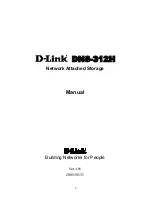
Basic Remote Networking
IP Routing
4-8
When the SCS receives an incoming connection request (remote node or LAN to LAN), an IP address is
negotiated for the caller. The address agreed upon depends on the caller’s requirements; some don’t have a
specific address requirement, while others must use the same IP address each time they log into the SCS.
Note:
PPP negotiation is covered in Chapter 7, PPP.
The SCS can also be used to connect to a dialup network such as Earthlink, where the network will then
assign you a nameserver and an IP address. For this functionality, the nameserver of the SCS should be set
to 0.0.0.0 (with the
Set/Define IP Nameserver
command) and the SCS should be set to accept dynamic IP
addresses (with the
Define Site IP Address Dynamic
command).
For a complete discussion of IP address assignment (including configuration instructions), see
IP Addresses
on page 6-1.
4.4 IP Routing
The following sections discuss IP routing issues as they pertain to remote networking. For a complete
discussion of IP routing, refer to Chapter 6,
IP
.
When a packet is received from or generated for a remote network, the SCS will check its routing table to
determine the most efficient route to the destination. If the SCS does not have a route to a remote network,
it cannot send the packet to the destination.
The entries in the routing table are one of three types:
Local routes
The network that is directly attached. This route is automatically determined
from the SCS IP address and network mask, and is never deleted.
Static routes
Routes that were manually entered in the routing table by a system
administrator. These routes are used when the dynamic routes cannot be.
Dynamic routes
Routes learned through the receipt of RIP (Routing Information Protocol)
packets. RIP is discussed in more detail on page 4-10.
Each routing entry can point to another router on the Ethernet or to a site configured for LAN to LAN
connections.
4.4.1 Routes for Outgoing LAN to LAN
Generally, the SCS has static routes configured for each remote LAN that it will connect to. These routes
point to sites that are configured for outgoing LAN to LAN connections. The first time that the SCS needs
to send a packet destined for a network on a remote LAN, the site will be activated and the SCS will attempt
to call the remote router. Once the connection has been formed, subsequent packets for the remote LAN will
be forwarded over that link.
Summary of Contents for SCS
Page 14: ...xii ...
Page 171: ...Modem Sharing Examples 10 6 ...
Page 314: ...Command Reference Service Commands 12 110 ...
Page 403: ...Show 802 11 Errors Rightmost Number B 5 00000002 Internal error 00000001 Internal error ...
Page 424: ...Index 13 ...
















































